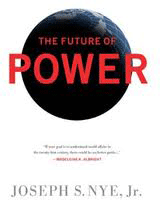After the Fourth Revolution, the World Dream will be the dream of billions of individuals.
It will replace the American Dream.
What will be the World Dream?
First, it will state that whatever your origin, color, ethnicity, and wherever you live, you have a chance to be successful. You have a chance to become part of the leadership of the Collaborative Age. And this apply to the entire World, thanks to cheap, long distance interactive communication. This is a revolution for 80% of Humankind!
Second, what will make you successful is not what made you successful in the Industrial Age. In the Industrial Age, compliance, hard work, career, diploma, were crucial. What is important in the Collaborative Age is to develop a unique personal brand, to get noticed on the virtual collaborative universe, to produce a unique contribution to the world, to connect emotionally with many individuals.
Third, the outcome of the World Dream will not only be the materialistic comfort of home – although a minimum satisfaction of basic material needs is still crucial. It will be the feeling to have contributed usefully to the life of a number of other people, to have created a new way of looking at the world, of having opened the eye of a community on a particular issue. Instead of discretion it will be, a strong public presence.
Are we ready to dream the World Dream? Many young people in developing and emerging countries already dream it. Let’s joint them. And act accordingly.








